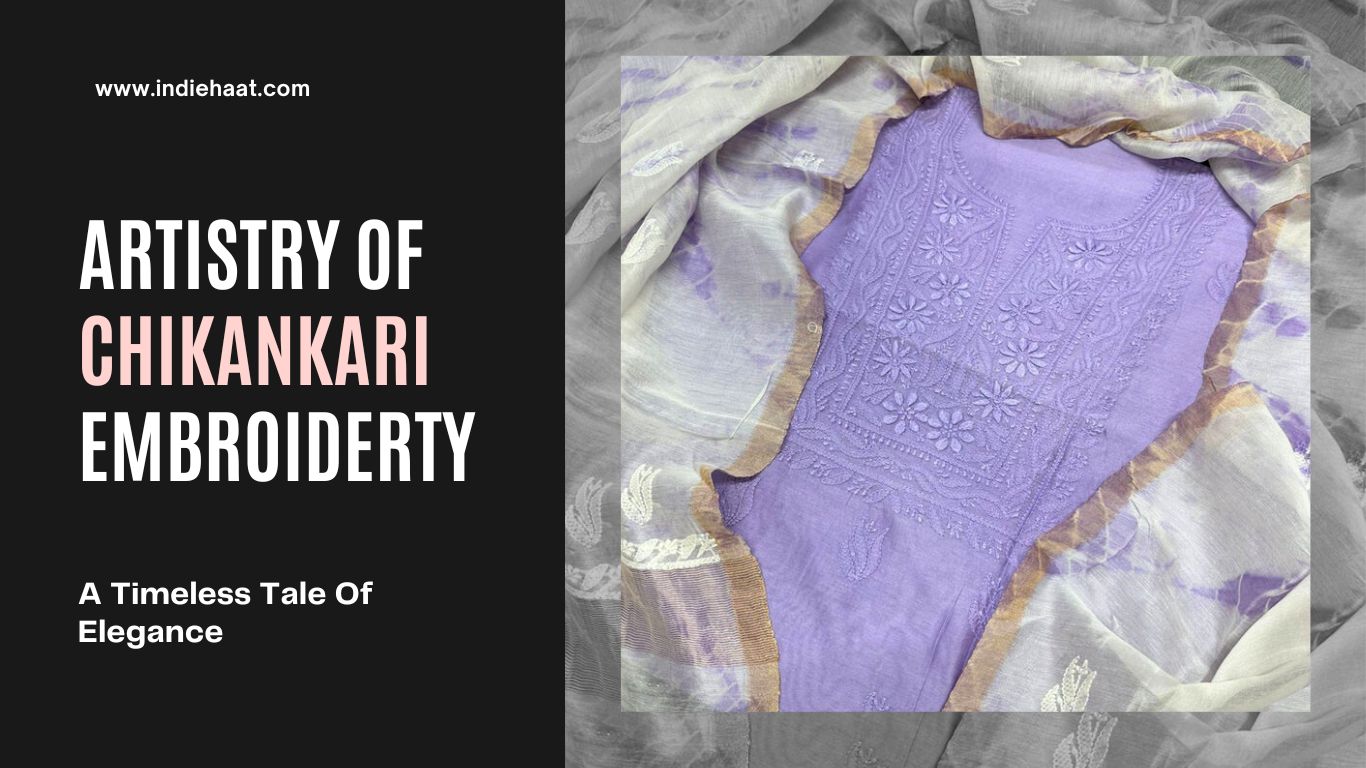Discovering the Artistry of Chikankari Embroidery: A Timeless Tale of Elegance

When one hears the word "Chikankari", visions of intricate and stunning embroidery immediately come to mind. This exquisite craft involves delicate white thread intricately stitched onto fine muslin cotton fabric. Its origins trace back to the Mughal era, where it was introduced to India as a facet of Persian culture by the Mughal emperors. The term "Chikankari" itself is derived from Persian, meaning 'beautifully embroidered fabric.'
Records suggest that similar embroidery techniques were practiced in India as early as the 3rd century B.C. While these early forms may have shared similar patterns, they primarily lacked the use of color. Interestingly, some theories propose that the term "Chikankari" may have originated from East Bengal, where it signifies 'fine' or 'delicate.'
Lucknow, the capital of Uttar Pradesh, is renowned as the epicenter of Chikankari craftsmanship. With a rich history spanning over 200 years, Chikankari has firmly established its place in the modern fashion industry. Originally favored by royal women, this embroidery was also known as 'royal embroidery work.' Traditionally, muslin cotton fabric and white thread were used for its creation. However, contemporary adaptations have seen Chikankari being executed on a variety of fabrics such as cotton, silk, wool, chiffon, and crepe.
Over the years, Chikankari has evolved, giving rise to various stitch patterns and techniques. It is no longer confined to traditional suits and dresses but has expanded its presence to encompass a wide range of products including table covers, runners, mats, napkins, and even tea covers. This flourishing textile industry has been a source of livelihood for many rural women and artisans, with nearly 90% of its workforce comprising skilled professionals.
Records suggest that similar embroidery techniques were practiced in India as early as the 3rd century B.C. While these early forms may have shared similar patterns, they primarily lacked the use of color. Interestingly, some theories propose that the term "Chikankari" may have originated from East Bengal, where it signifies 'fine' or 'delicate.'
Lucknow, the capital of Uttar Pradesh, is renowned as the epicenter of Chikankari craftsmanship. With a rich history spanning over 200 years, Chikankari has firmly established its place in the modern fashion industry. Originally favored by royal women, this embroidery was also known as 'royal embroidery work.' Traditionally, muslin cotton fabric and white thread were used for its creation. However, contemporary adaptations have seen Chikankari being executed on a variety of fabrics such as cotton, silk, wool, chiffon, and crepe.
Over the years, Chikankari has evolved, giving rise to various stitch patterns and techniques. It is no longer confined to traditional suits and dresses but has expanded its presence to encompass a wide range of products including table covers, runners, mats, napkins, and even tea covers. This flourishing textile industry has been a source of livelihood for many rural women and artisans, with nearly 90% of its workforce comprising skilled professionals.
-
Posted in
chikankari, creative work, embroidery, heritage, intricate designs, timeless art





